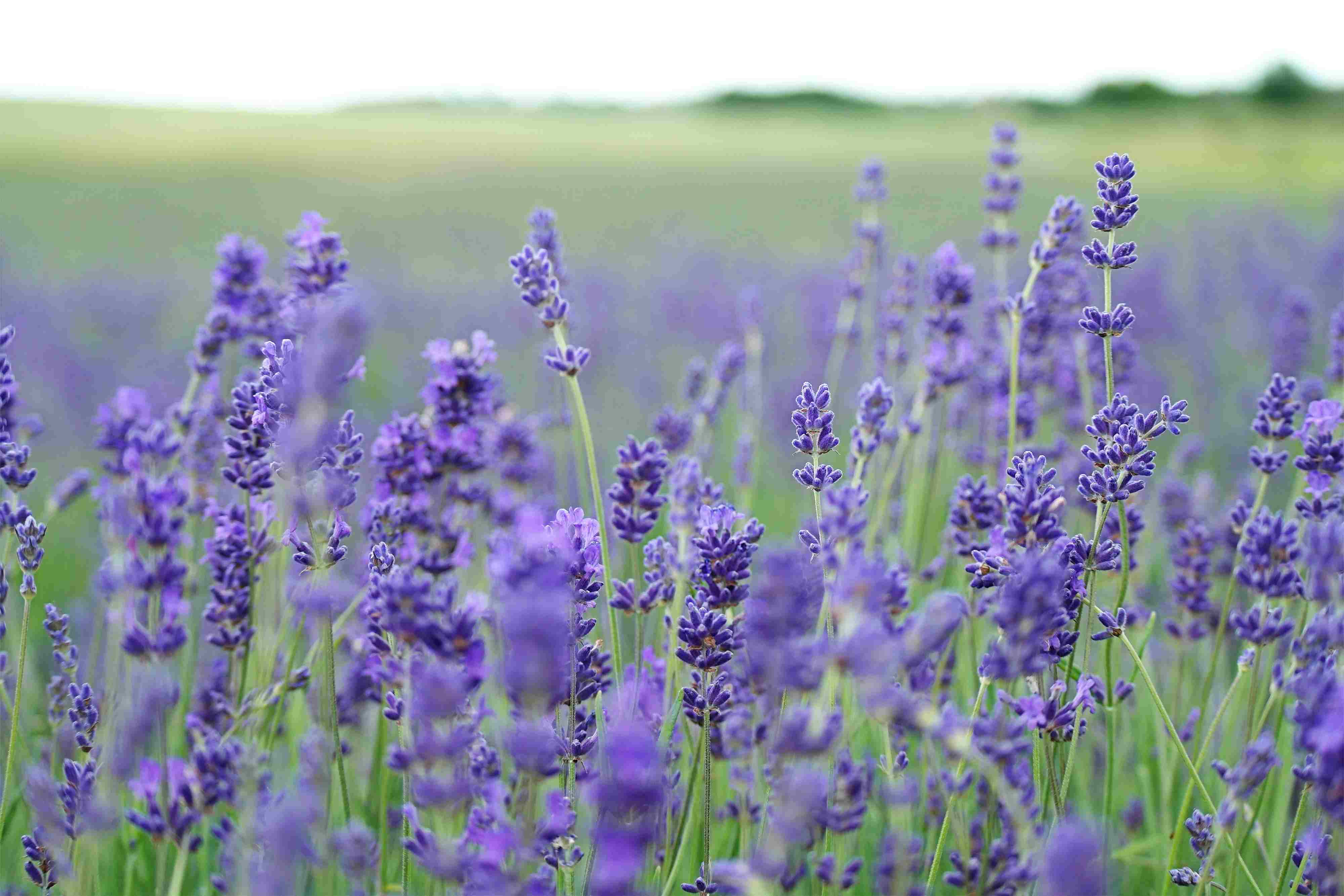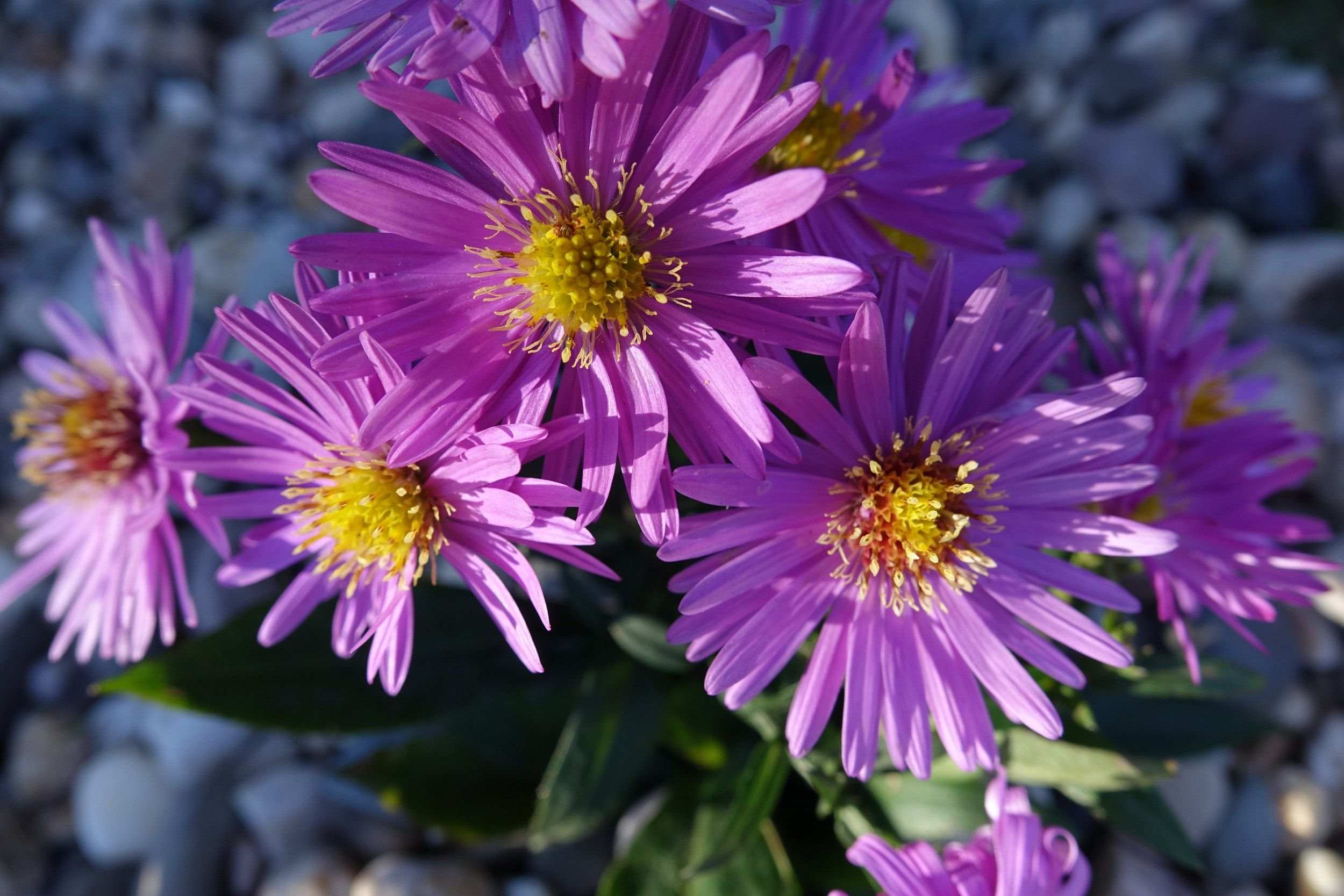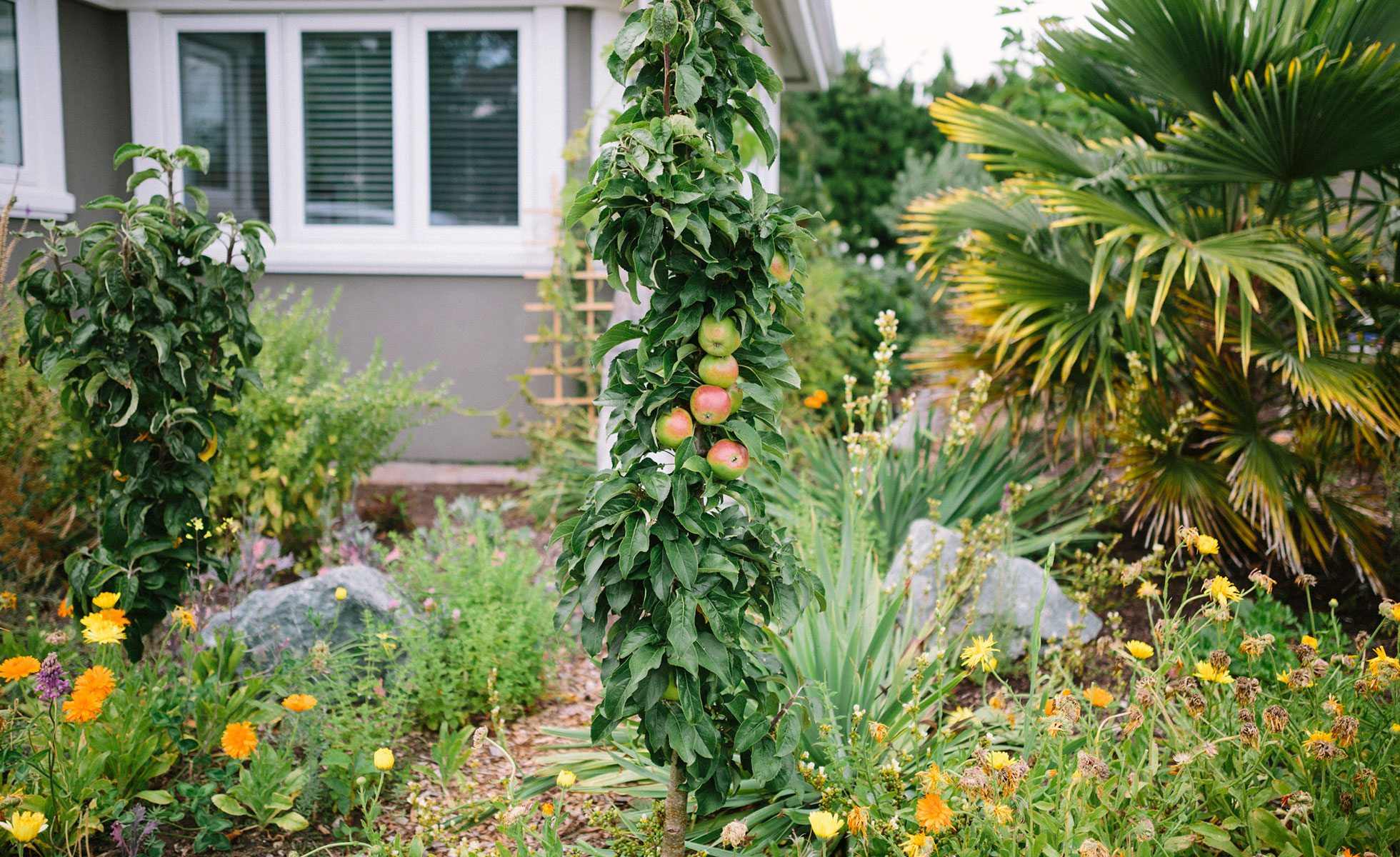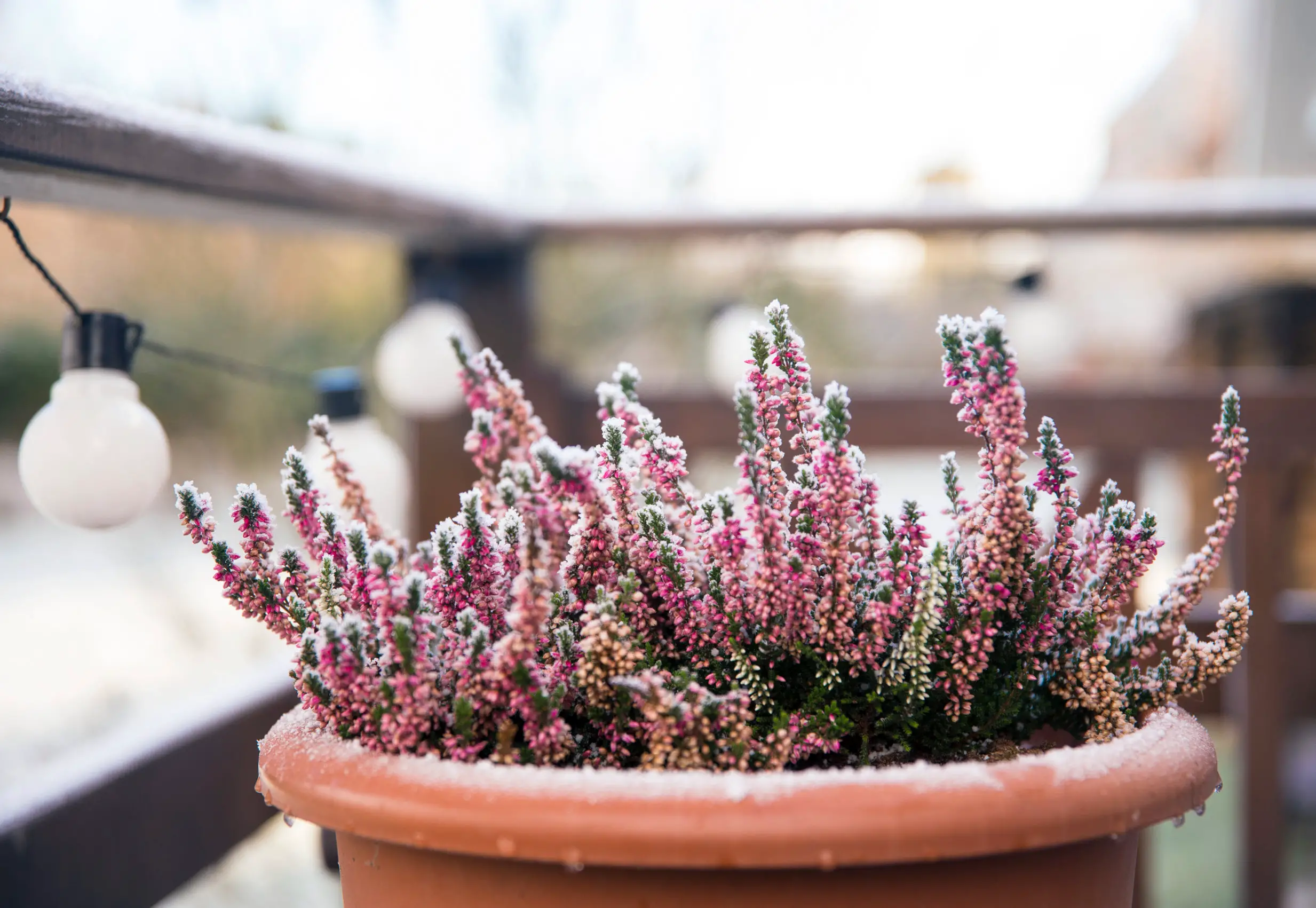Home>Types of Gardening>Ornamental Gardening>What Flowers Are Perennials
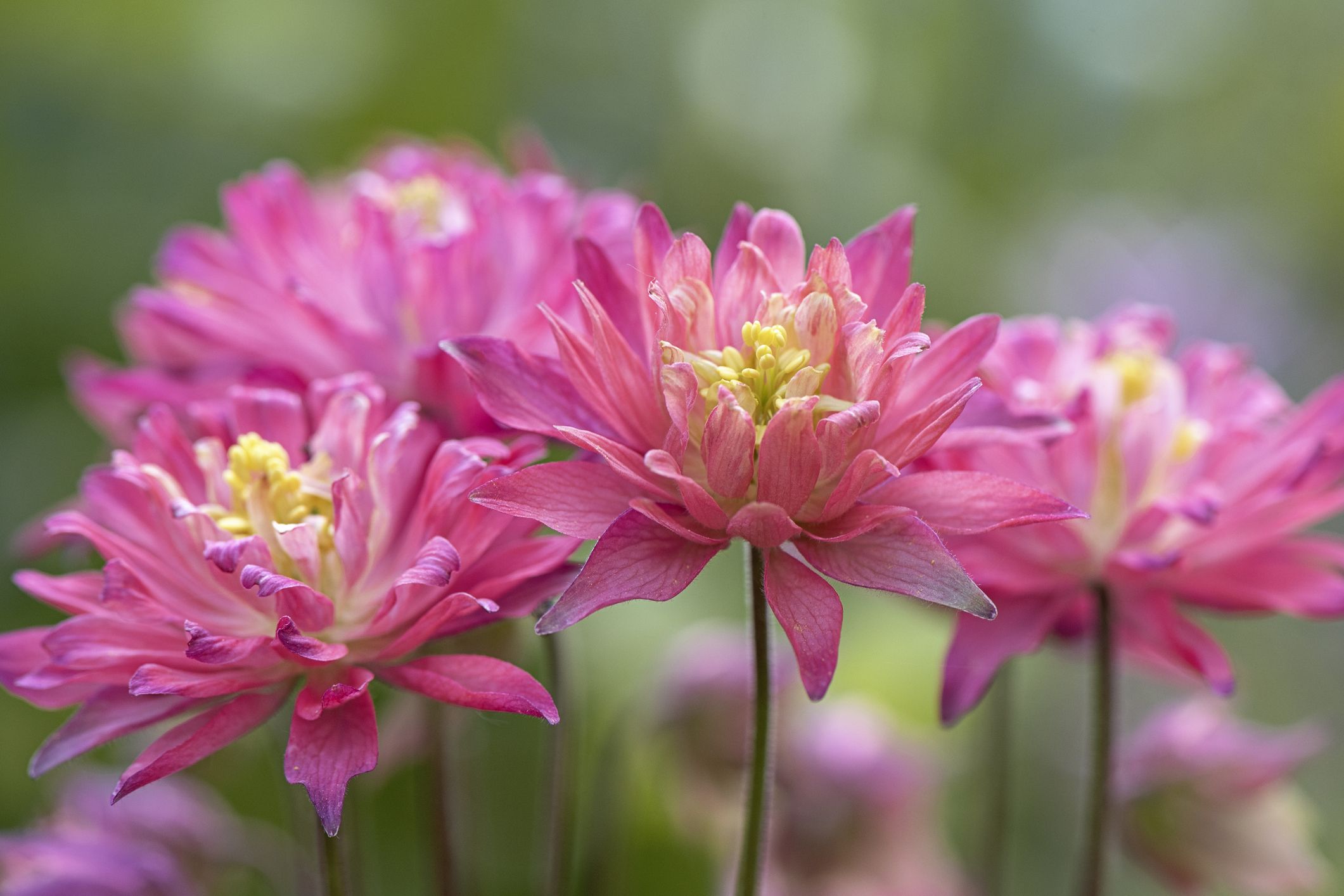

Ornamental Gardening
What Flowers Are Perennials
Modified: January 22, 2024
Discover the beauty of perennial flowers perfect for your ornamental garden. Learn about the different types and how to care for them.
(Many of the links in this article redirect to a specific reviewed product. Your purchase of these products through affiliate links helps to generate commission for Chicagolandgardening.com, at no extra cost. Learn more)
Table of Contents
- Introduction
- Definition of Perennial Flowers
- Characteristics of Perennial Flowers
- Benefits of Growing Perennial Flowers
- Popular Varieties of Perennial Flowers
- Factors to Consider When Growing Perennials
- How to Care for Perennial Flowers
- Common Mistakes to Avoid When Growing Perennials
- How to Propagate Perennial Flowers
- Frequently Asked Questions (FAQs)
- Conclusion
Introduction
Welcome to the fascinating world of ornamental gardening! If you have a passion for beautiful flowers and lush greenery, you’re in the right place. In this article, we will dive into the wonderful realm of perennial flowers and explore everything you need to know about these captivating plants.
Perennial flowers are a popular choice among garden enthusiasts due to their ability to return year after year, bringing beauty and charm to any landscape. Unlike annuals, which need to be replanted every year, perennials have a longer lifespan and can survive through different seasons, making them a cost-effective and low-maintenance addition to any garden.
From stunning blooms to vibrant foliage, perennial flowers come in a wide array of shapes, sizes, and colors, offering endless possibilities for enhancing the aesthetic appeal of your outdoor space. Whether you’re a seasoned gardener or a beginner, incorporating perennials into your garden can be an exciting and rewarding experience.
In this article, we will explore the definition, characteristics, and benefits of growing perennial flowers. We will also delve into popular varieties of perennials and discuss important factors to consider when cultivating these plants. Additionally, we will provide valuable tips on caring for perennials and highlight common mistakes to avoid.
If you’ve ever wondered how to propagate perennial flowers to expand your garden or have any questions related to this fascinating gardening topic, we’ve got you covered with our frequently asked questions section.
So, grab your gardening gloves and let’s embark on a journey to discover the enchanting world of perennial flowers!
Definition of Perennial Flowers
Before diving deeper into the world of perennial flowers, let’s start with a clear understanding of what exactly defines a perennial plant. Perennial flowers refer to plants that have a life cycle lasting for more than two years. Unlike annuals, which complete their life cycle within a single growing season, perennials have the ability to regrow and bloom for multiple years.
Perennial flowers are known for their resilience and adaptability, with the ability to survive through various environmental conditions. While some perennials may go dormant during the colder months, they will typically reemerge when the weather becomes more favorable, renewing their foliage and producing new blooms.
One of the distinguishing characteristics of perennials is their underground root system. These plants develop permanent root structures, allowing them to store energy during periods of dormant growth and fuel new growth when conditions are favorable.
It is important to note that not all perennial plants are flowers. Some popular examples of perennial flowers include peonies, daylilies, daisies, and roses. However, there are also perennial grasses, herbs, and shrubs that add texture and variety to perennial garden designs.
Perennials have a unique advantage over annuals as they require less effort and maintenance. Once established, they can continue to thrive and bloom, reducing the need to replant every year. This makes them an ideal choice for individuals looking to create a long-lasting and sustainable garden.
Overall, perennial flowers provide gardeners with a dynamic, ever-changing landscape, offering a multitude of color, texture, and form throughout the seasons. Whether you’re seeking vibrant blooms in the spring, lush foliage in the summer, or stunning fall colors, perennials can bring beauty and joy to your garden year after year.
Characteristics of Perennial Flowers
Perennial flowers possess certain unique characteristics that set them apart from other types of plants. Understanding these characteristics is key to successfully incorporating perennials into your garden. Let’s explore some of the defining features of these plants:
- Longevity: Perennials have a longer lifespan compared to annuals or biennials. Once established, they can persist in your garden for several years, providing consistent beauty and interest.
- Dormancy: Unlike evergreen plants that retain their foliage year-round, many perennial flowers undergo periods of dormancy. During this time, the aerial parts of the plant die back, but the root system remains alive and dormant until favorable conditions return.
- Regrowth: As the seasons change, perennials have the ability to regrow and bloom. Their root systems store energy that fuels new growth, allowing them to rejuvenate and produce fresh foliage and flowers year after year.
- Adaptability: Perennial flowers have developed mechanisms to adapt to a wide range of environmental conditions. They can withstand challenging drought periods, cold winters, and even some degree of shade, making them versatile choices for various garden settings.
- Variety: There is an incredible variety of perennial flowers available, offering an extensive range of sizes, colors, shapes, and textures. From delicate, small flowers to large, showy blooms, there’s a perennial to suit every garden aesthetic.
- Attractiveness to Pollinators: Perennials are often well-suited to attracting pollinators such as bees, butterflies, and hummingbirds. Their nectar-rich flowers provide a valuable food source and habitat for these beneficial creatures, contributing to a healthy and vibrant garden ecosystem.
Understanding the characteristics of perennial flowers allows you to choose plants that will thrive in your specific garden conditions. Whether you have well-drained soil, full sun exposure, or a partially shaded area, there is a perennial flower that will suit your needs and preferences.
With their longevity, adaptability, and stunning beauty, perennial flowers are truly an asset to any garden. The next section will explore the numerous benefits of growing these plants, highlighting why they are a popular choice among garden enthusiasts.
Benefits of Growing Perennial Flowers
Growing perennial flowers in your garden brings forth numerous benefits that make them an attractive choice for both seasoned gardeners and beginners alike. Let’s explore some of the advantages of incorporating these captivating plants into your landscape:
- Long-Term Beauty: One of the primary benefits of growing perennials is their long-lasting beauty. Once established, these plants continue to bloom and add color and vibrancy to your garden year after year. This provides a constantly changing, yet consistently gorgeous landscape.
- Low Maintenance: Compared to annuals, perennials require less maintenance. Once planted and established, they need minimal care, saving you time and effort in the long run. With proper care, perennials can thrive for many years with little intervention.
- Cost-Effective: While the initial investment in perennial plants may be slightly higher than annuals, their long lifespan more than compensates for the cost. You won’t have to buy new plants each year, resulting in significant savings over time.
- Drought Tolerance: Many perennial flowers are well adapted to dry conditions and can withstand periods of drought. Once established, they develop deep root systems that help them access water from deeper soil layers, reducing the need for frequent watering.
- Environmental Benefits: Perennial flowers offer numerous environmental benefits. Their deep roots help improve soil structure, prevent erosion, and promote water infiltration. Additionally, these plants attract and support pollinators, contributing to the conservation of important insect species.
- Year-Round Interest: With careful selection, you can create a garden that provides year-round interest using perennial flowers. By combining different varieties that bloom at various times and have different foliage colors, you can enjoy a diverse and visually appealing garden throughout the seasons.
- Naturalizing Ability: Some perennial flowers have a naturalizing ability, meaning they can spread and colonize an area over time. This can be an advantage, as it fills in empty spaces and creates a more natural and cohesive garden design.
The benefits of growing perennial flowers are plentiful, making them a popular choice for gardeners seeking both beauty and functionality in their outdoor space. With minimal maintenance, lasting beauty, and numerous environmental benefits, perennials are truly a worthwhile addition to any garden.
Popular Varieties of Perennial Flowers
When it comes to choosing perennial flowers for your garden, the options are virtually endless. From delicate blooms to bold and vibrant colors, there is a perennial flower to suit every style and preference. Here are some popular varieties to consider:
Roses (Rosa spp.)
Known as the “queen of flowers,” roses are timeless classics that never fail to impress. With their intoxicating fragrance and captivating beauty, roses come in a variety of colors and forms, including hybrid teas, floribundas, climbers, and shrubs.
Daylilies (Hemerocallis spp.)
Daylilies are renowned for their versatility and low-maintenance qualities. These hardy perennials produce voluminous clusters of trumpet-shaped flowers in a wide range of colors, with new blooms appearing daily. They are excellent choices for borders and mass plantings.
Peonies (Paeonia spp.)
Peonies are known for their stunning, fragrant blooms and lush foliage. These long-lived perennials come in various forms, including herbaceous and tree peonies, and produce large, showy flowers in shades of white, pink, and red.
Lavender (Lavandula spp.)
Lavender is a popular perennial herb known for its aromatic flowers and silvery foliage. This versatile plant thrives in sunny, well-drained locations and offers both visual and sensory appeal. Lavender is often used in borders, rock gardens, or as a fragrant addition to bouquets and culinary creations.
Black-eyed Susan (Rudbeckia spp.)
Black-eyed Susan is a native wildflower that adds a burst of vibrant color to any garden. With their golden-yellow petals and dark centers, these perennials attract butterflies and are perfect for naturalizing areas or brightening up borders and meadows.
Salvia (Salvia spp.)
Salvia is a diverse genus of perennials that includes both ornamental and culinary varieties. With their vibrant, nectar-rich flowers, salvias attract hummingbirds and butterflies. They come in numerous colors, including vibrant blues, purples, pinks, and reds.
Hosta (Hosta spp.)
Hostas are shade-loving perennials known for their attractive foliage and easy care. These plants are available in a wide range of leaf shapes, sizes, and colors, from solid greens to variegated patterns. Hostas are popular choices for providing texture and beauty to shady areas.
These are just a few examples of the many wonderful perennial flowers available to gardeners. When selecting plants for your garden, consider factors such as sunlight requirements, soil conditions, and moisture levels to ensure the best chances of success. With a combination of these popular perennial flowers, you can create a garden filled with beauty, diversity, and continuous color throughout the seasons.
Factors to Consider When Growing Perennials
Growing perennials in your garden requires careful consideration of various factors to ensure their success and longevity. From choosing the right plants to preparing the soil, here are some important factors to keep in mind:
Light Requirements:
Perennial flowers have varying light requirements. Some thrive in full sun, while others prefer partial shade or even full shade. Before selecting and planting perennials, assess the sunlight conditions in your garden and choose plants that are suitable for the specific light levels of each planting area.
Soil Type and Quality:
The type and quality of soil can greatly impact the growth and performance of perennials. Most perennials prefer well-draining soil with balanced organic matter. Conduct a soil test to determine the pH level and nutrient content of your soil. Amend the soil as necessary to improve its structure and fertility to support optimal plant growth.
Watering Needs:
Understanding the watering needs of different perennials is vital for their overall health. Some varieties prefer consistently moist soil, while others are more drought-tolerant and require less frequent watering. Be mindful of the specific water requirements of each plant and adjust your watering routine accordingly to avoid over or under-watering.
Climate Suitability:
Consider the climate in your region when selecting perennials. Some plants are better suited for cooler climates, while others thrive in warmer regions. Research and choose perennials that are known to be well-adapted to the climate conditions in your area to increase their chances of survival.
Planting and Spacing:
Proper planting and spacing are crucial for the healthy growth of perennials. Follow the recommended planting depth and spacing guidelines for each plant to provide adequate room for root development and prevent overcrowding. This will also help reduce competition for nutrients and minimize the risk of disease and pest infestation.
Support and Staking:
Certain perennials, such as tall or heavy-flowering varieties, may require support or staking to prevent them from flopping over. Install stakes or use cages and trellises to provide necessary support and maintain the upright growth habit of these plants. Regularly check and adjust the supports as the plants grow.
Seasonal Maintenance:
Perennials require regular maintenance throughout the growing season. This may include deadheading spent flowers, pruning back foliage, and dividing overgrown clumps. Stay attentive to the specific care needs of each perennial and perform necessary maintenance tasks to ensure their long-term health and vitality.
By considering these factors and planning accordingly, you can create an optimal environment for your perennials to thrive and bring years of beauty to your garden. Remember to continuously monitor and adjust as needed to provide the best conditions for their growth and success.
How to Care for Perennial Flowers
Caring for perennial flowers is essential to ensure their health, longevity, and continuous blooming. With proper care, these beautiful plants will reward you with stunning blooms and lush foliage year after year. Here are some key care tips for maintaining your perennial flowers:
Watering:
Provide consistent, deep watering to your perennials, especially during dry spells. Water at the base of the plants to avoid wetting the foliage, as this can lead to fungal diseases. Aim for a regular watering schedule, keeping the soil evenly moist but not waterlogged.
Fertilizing:
Feed your perennials with a balanced, slow-release fertilizer in early spring or follow the specific fertilizer recommendations for each plant. This will provide the necessary nutrients for healthy growth and abundant blooms. Avoid over-fertilizing, as it can lead to excessive foliage growth with limited flower production.
Mulching:
Apply a layer of organic mulch around your perennials to help retain moisture, suppress weed growth, and regulate soil temperature. Use materials such as wood chips, straw, or shredded bark, and ensure the mulch is spread evenly around the plants, keeping it a few inches away from the stems to prevent rot.
Deadheading:
Remove spent flowers regularly through deadheading. This process involves cutting off the faded blooms, which encourages the plant to redirect its energy towards producing new flowers. Deadheading not only keeps the garden looking tidy but also promotes prolonged blooming throughout the season.
Pruning:
Some perennial flowers benefit from periodic pruning to maintain their shape and encourage new growth. Prune back any damaged or diseased foliage and trim back leggy growth to promote a more compact and bushy plant habit. Spring or fall is usually the ideal time for pruning, depending on the specific plant type.
Dividing:
Over time, perennials may become crowded, resulting in reduced vigor and blooming. Dividing larger clumps every few years helps rejuvenate the plants and promote healthy growth. Carefully dig up the clumps, separate them into smaller sections, and replant them in well-prepared soil.
Protecting in Winter:
Some perennials may need protection during the winter months, especially in regions with extremely cold temperatures. Apply a layer of mulch or straw around the base of the plants to insulate the roots and help them withstand frost. Consider using protective covers or wraps for more delicate perennial varieties.
Regular care and attention to these basic practices will go a long way in maintaining the health and vitality of your perennial flowers. By providing proper watering, fertilizing, mulching, and performing necessary maintenance tasks, your perennials will flourish and add beauty to your garden for years to come.
Common Mistakes to Avoid When Growing Perennials
While growing perennial flowers can be a rewarding experience, it’s important to be aware of some common mistakes that can hinder the success of these plants. By avoiding these pitfalls, you can ensure healthy growth and long-lasting beauty in your garden. Here are some common mistakes to avoid when growing perennials:
Wrong Plant Selection:
Choosing the wrong plants for your specific growing conditions is a common mistake. It’s crucial to consider factors like sunlight, soil type, and climate suitability when selecting perennials. Research each plant’s requirements and choose varieties that are well-suited to your garden’s unique conditions.
Poor Soil Preparation:
Inadequate soil preparation is a mistake that can impact the growth and overall health of perennials. Ensure your soil is well-drained, fertile, and enriched with organic matter. Prepare the soil by removing weeds, loosening it, and incorporating compost or aged manure to provide essential nutrients.
Overwatering or Underwatering:
Watering mistakes can harm the health of perennial flowers. Overwatering can lead to root rot and fungal diseases, while underwatering can result in stress and poor growth. Find the right balance by monitoring soil moisture levels and adjusting your watering regimen based on the specific needs of each plant.
Neglecting Regular Maintenance:
Perennials require regular maintenance to stay healthy and blooming. Neglecting tasks like deadheading, pruning, and dividing can result in reduced flower production and overall vigor. Set a schedule for routine maintenance tasks and ensure they are performed as needed throughout the growing season.
Improper Pruning Techniques:
Pruning mistakes can lead to poor growth and diminished flowering. Improper pruning, such as cutting back at the wrong time or cutting into vital plant tissues, can cause undue stress. Educate yourself on the correct pruning techniques for each specific perennial plant and follow the guidelines accordingly.
Failure to Control Pests and Diseases:
Ignoring pests and diseases can quickly devastate a garden. Common issues for perennials include aphids, slugs, fungal diseases, and powdery mildew. Regularly inspect your plants for any signs of pests or diseases, and take appropriate measures to control and prevent them, such as using organic pest control methods or creating proper air circulation.
Overcrowding:
Planting perennials too close together can result in overcrowding. Overcrowded plants compete for sunlight, water, and nutrients, leading to stunted growth and reduced flowering. Follow the recommended spacing guidelines for each plant and allow room for proper airflow, preventing disease development and allowing each plant to reach its full potential.
By avoiding these common mistakes, you can ensure the healthy growth and longevity of your perennial flowers. Stay attentive to the needs of your plants, provide proper care, and address issues promptly to create a thriving and visually stunning perennial garden.
How to Propagate Perennial Flowers
Propagating perennial flowers is a rewarding way to expand your garden and share your favorite plants with others. There are several methods of propagation that can be used, including division, stem cuttings, and seed sowing. Here are the steps to propagate perennial flowers:
Division:
Division is one of the most common methods of propagating perennials. It involves separating a mature plant into smaller sections, each with its own roots and shoots. Here’s how to do it:
- Choose a healthy and mature perennial plant to divide.
- Water the plant thoroughly a day before division to make the roots more pliable.
- Using a sharp spade or garden fork, carefully dig around the plant, lifting it out of the ground.
- Gently separate the plant into smaller clumps, ensuring each clump has several shoots and a healthy root system.
- Replant the divided clumps in prepared soil, spacing them appropriately based on their growth habit and size.
- Water the newly divided plants thoroughly and provide regular care until they become established.
Stem Cuttings:
Another method of propagating perennials is through stem cuttings. This method involves taking a portion of a stem from a healthy plant and encouraging it to develop roots and grow into a new plant. Here’s how to do it:
- Select a healthy stem from the parent plant, preferably a non-flowering shoot.
- Using a clean and sharp pair of garden pruners, take a cutting that is approximately 4-6 inches long.
- Remove any leaves from the lower portion of the cutting.
- Dip the cut end of the stem in a rooting hormone to promote root development (optional).
- Plant the cutting in a well-draining potting mix or rooting medium.
- Place the pot or tray in a warm and bright location, away from direct sunlight.
- Maintain proper moisture levels by misting the cutting regularly or covering it with a plastic bag to create a mini-greenhouse effect.
- Monitor the cutting for root development, and once roots have formed, transplant it into a larger container or directly into the garden.
Seed Sowing:
Some perennial flowers can also be propagated from seeds. While this method may require more time and patience, it allows you to start with a clean slate and grow a diverse array of plants. Here’s how to do it:
- Collect or obtain fresh seeds from mature perennial plants.
- Prepare seed trays or pots with well-draining potting mix or seed-starting mix.
- Sow the seeds according to the recommended depth and spacing for each plant.
- Water the seeds gently to ensure adequate moisture but avoid waterlogging.
- Place the tray or pots in a warm and bright location, away from direct sunlight.
- Keep the soil consistently moist by misting or watering as needed.
- Monitor the seedlings as they emerge and provide regular care, such as thinning out overcrowded seedlings and providing appropriate fertilization.
- Transplant the seedlings into larger containers or directly into the garden once they have developed a strong root system and are large enough to handle.
Propagation allows you to create new plants and expand your perennial collection. The method you choose will depend on the specific needs and characteristics of each plant. With patience and proper care, you can enjoy the satisfaction of watching your propagated perennial flowers grow and thrive.
Frequently Asked Questions (FAQs)
Here are some frequently asked questions about growing and caring for perennial flowers:
1. How often should I water my perennial flowers?
The frequency of watering perennials depends on various factors, including the plant’s water requirements, soil type, weather conditions, and stage of growth. As a general guideline, water thoroughly when the top inch of soil feels dry to the touch. Avoid overwatering, as it can lead to root rot and other issues.
2. Do perennials require full sun or can they tolerate shade?
The light requirements of perennials vary depending on the species. While some perennials thrive in full sun and require a minimum of 6-8 hours of direct sunlight per day, others are adapted to shade and prefer dappled light or partial shade. Be sure to choose plants that are suited to the light conditions in your garden.
3. When is the best time to divide perennials?
The ideal time to divide perennials is typically in spring or early fall when the weather is cooler and plants are entering a period of active growth. Dividing plants during these seasons allows them to establish new roots before the stress of extreme temperatures. However, certain perennials have specific preferences, so it’s best to research the specific requirements of each plant before dividing.
4. Can I grow perennials in containers?
Yes, many perennials can be grown successfully in containers. When choosing perennials for containers, consider their size and growth habit, ensuring they won’t outgrow the container too quickly. Use a well-draining potting mix, provide adequate water and nutrients, and be mindful of the container’s size and exposure to prevent plant stress.
5. How do I attract pollinators to my perennial garden?
To attract pollinators like bees, butterflies, and hummingbirds, include a variety of nectar-rich perennial flowers in your garden. Choose plants with different bloom times to provide a continuous food source throughout the seasons. Additionally, ensure there is a water source nearby and avoid using pesticides that can harm pollinators.
6. Can I cut back perennial flowers after they bloom?
Deadheading spent flowers is generally recommended for many perennials. Removing faded blooms not only improves the plant’s appearance but also encourages new bud formation and prolonged blooming. However, some perennials, like those that produce attractive seedheads in fall or that self-sow, may benefit from leaving the flowers intact for added interest and naturalizing.
7. Do perennials need to be fertilized?
Perennials generally benefit from regular feeding to support healthy growth and abundant blooms. Apply a balanced, slow-release fertilizer in early spring or follow the specific feeding recommendations for each plant. Avoid over-fertilizing, as excessive nutrients can lead to lush foliage but limited flower production.
These are just a handful of frequently asked questions about growing and caring for perennial flowers. If you have more specific queries, consult gardening resources, local nurseries, or seek advice from fellow gardeners who have experience with perennials in your area.
Conclusion
Perennial flowers offer a world of beauty, diversity, and long-lasting appeal to any garden. With their ability to return year after year, these plants provide a cost-effective and low-maintenance option for garden enthusiasts, bringing joy and color to outdoor spaces.
From the definition and characteristics of perennials to the benefits of growing them, we have explored the fascinating world of these enduring plants. We have also delved into popular varieties, factors to consider when growing them, and essential care techniques to keep them thriving.
By selecting the right plants for your garden, ensuring proper soil preparation, and providing adequate watering and maintenance, you can create a stunning perennial display that evolves and delights throughout the seasons. Remember to consider factors like light requirements, climate suitability, and the importance of attracting pollinators to foster a vibrant and sustainable garden ecosystem.
If you are looking to expand your garden, we have covered various propagation methods, including division, stem cuttings, and seed sowing, allowing you to propagate your favorite perennial flowers and share their beauty with others.
By avoiding common mistakes and seeking to continuously learn and improve, you will become a skilled gardener in cultivating these captivating plants. Don’t hesitate to explore and experiment with different varieties and techniques to find what works best for your unique garden space and personal preferences.
So, whether you’re a beginner or an experienced gardener, embrace the world of perennial flowers and let their enduring beauty bring you years of joy and inspiration in your ornamental gardening journey.
